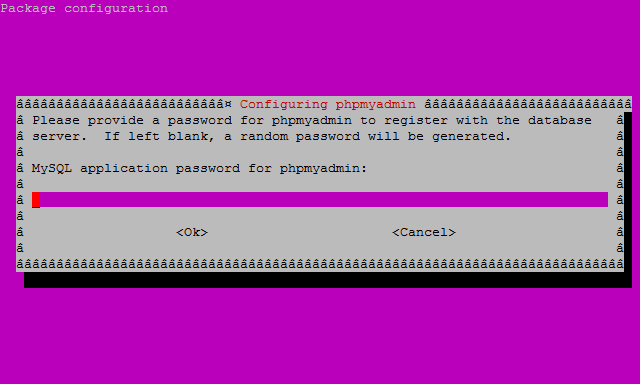
- PHPMYADMIN CONFIG FILE UBUNTU HOW TO
- PHPMYADMIN CONFIG FILE UBUNTU INSTALL
- PHPMYADMIN CONFIG FILE UBUNTU UPDATE
- PHPMYADMIN CONFIG FILE UBUNTU FREE
Hence we will first try installing via apt then we will try other ways. All the packages are instaled via apt repository.
PHPMYADMIN CONFIG FILE UBUNTU INSTALL
We are going to install latest version of Phpmyadmin, as you know apt is the repository in ubuntu. Steps for Installing Phpmyadmin on Ubuntu To overcome this problem, the team behind phpMyAdmin created a web interface for managing their service and it’s freely available and opensource. Read phpMyAdmin from ubuntu documentation Darshana at 6:44 Add a comment 4 Answers Sorted by: 139 Did you try Edit: Do this first sudo nano /etc/apache2/nf add this line somewhere Include /etc/phpmyadmin/nf and finally restart apache. This can be especially true if you’re new to Linux. While many users need the functionality of a database management system like MySQL, they may not feel comfortable interacting with the system solely from the MySQL prompt.
PHPMYADMIN CONFIG FILE UBUNTU FREE
Configure Mysql Database with PhpMyadminĪ Ubuntu server or a Desktop with root privilages or you can get a free vps hosting from Vultr or DigitalOcean.Step 8 - Configure Apache to Use PhpmyAdmin.Step 6 - Install Phpmyadmin in a folder.Step 2 - Install Apache in Ubuntu server.
PHPMYADMIN CONFIG FILE UBUNTU UPDATE
Step 1 - Update the Ubuntu Package manager.Steps for Installing Phpmyadmin on Ubuntu.The physical networking equipment in between you and your server should allow communication on the port you want to connect with. Obviously, your firewall should allow the MySQL Server application to communicate over the port you want.Ideally, you should be accessing the MySQL server from a static IP address or subnet, so that you can be as restrictive as possible. it limits the accepted connections to a pattern of IP addresses. The "Limit to Hosts Matching" field is what disallows you to connect non-locally. You can do this by opening a local connection to the server with MySQL Workbench, then going to Server>Users and Privileges from the menu bar and finding the user account you want to connect with. While it isn't recommended, you can instead put % in that field for testing purposes. You can find this file in C:\ProgramData\MySQL\MySQL Server 8.0 on Windows.Īfterwards, check that the user account you are establishing the connection with does not have localhost in the Limit to Hosts Matching field. is at least commented out in your my.ini or my.cnf file. The following three steps should do it.Įnsure that the line starting with bind-address. It would be preferable if you were to set up user accounts with more restrictive permissions.
PHPMYADMIN CONFIG FILE UBUNTU HOW TO
Resources: How to Allow Remote Connections to MySQLĮnabling remote root access can be dangerous. Type '\c' to clear the current input statement. Other names may be trademarks of their respective Oracle is a registered trademark of Oracle Corporation and/or itsĪffiliates. Server version: 5.7.31 MySQL Community Server (GPL)Ĭopyright (c) 2000, 2020, Oracle and/or its affiliates. You should get this output depending on your MySQL server version: Welcome to the MySQL monitor. So in my case it was: mysql -u root -h 34.69.261.158 -p

Where u represents user, h represents mysql-server-ip-address and p represents password. In my case the user is root: SELECT host FROM er WHERE user = "root" įinally, you can try connecting to the MySQL server from another server using the command: mysql -u username -h mysql-server-ip-address -p You can specify the Ip-Address of the individual hosts that you want to grant the user access from using the command - GRANT ALL PRIVILEGES ON *.* TO IDENTIFIED BY 'my-password' Īfterwhich I checked the hosts that the user now has access to. Note: % grants a user remote access from all hosts on a network. GRANT ALL PRIVILEGES ON *.* TO IDENTIFIED BY 'my-password' Next, I ran the command below to grant the root user remote access to the database named my_database: USE my_database In my case the user is root: SELECT host FROM er WHERE user = "root"

Next, log into the MySQL server console on the server it was installed: mysql -u root -pĬheck the hosts that the user you want has access to already. Apply the changes made to the MySQL config file by restarting the MySQL service: sudo systemctl restart mysql Once you make the necessary changes, save and exit the configuration file. Scroll down to the bind-address line and ensure that is either commented out or replaced with 0.0.0.0 (to allow all remote connections) or replaced with Ip-Addresses that you want remote connections from. Use your preferred text editor to open the MySQL server configuration file: sudo nano /etc/mysql//mysqld.cnf I had to this challenge when working on a Java Project with MySQL server as the database.įirst, confirm that your MySQL server configuration to allow for remote connections.


 0 kommentar(er)
0 kommentar(er)
